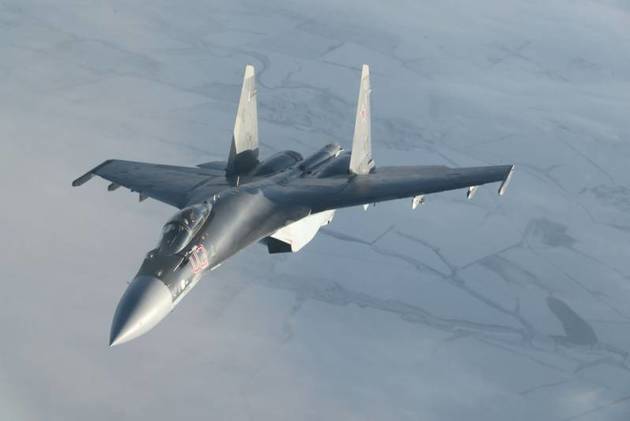Iran and Russia will reportedly sign a 20-year $10 billion defense agreement in January 2022. Under that agreement, Moscow will supply Tehran with 24 Su-35SEs, two advanced S-400 air defense missile systems and a military satellite, Forbes reports.
The Super Flankers in question are the same ones Russia built for Egypt’s air force. However, the threat of U.S. sanctions against Cairo under the Countering America’s Adversaries Through Sanctions Act (CAATSA) may very well jeopardize that $2 billion deal.
For now, a number of Su-35SEs intended for delivery to Egypt remain parked in Komsomolsk-on-Amur in the Russian Far East, home to the eponymous Komsomolsk-on Amur Aircraft Plant (KnAAZ). This has fuelled speculation that Russia will sell them to Iran or Algeria (a major Russian arms client) instead.
One article estimates that 15 Su-35SEs could be transferred to Iran in early 2022 if a contract is signed. The Islamic Republic of Iran Air Force (IRIAF) is quite antiquated. Most of its fleet consists of U.S.-built F-14As, F-4s, and F-5s delivered in the 1960s and 1970s during the reign of its last shah. Since then, Theran acquired MiG-29As from Russia and some ex-Iraqi Air Force Dassault Mirage F-1s flown to the country during the 1991 Persian Gulf War.
Iran hasn’t bought any new fighter jets since the early 1990s. Consequently, acquiring two dozen 4.5-generation Su-35SEs – which feature thrust-vectoring engines and Tikhomirov NIIP N135 Irbis Passive Electronically Scanned Array (PESA) radar – could bolster Iran’s air power and serve as a stopgap solution for the country as it gradually upgrades its fighter fleet over the next decade.
Russian or Chinese-built fighters (or a mixture of both) have long been viewed by experts as the most likely jets Iran would procure in the 2020s or early 2030s. However, Tehran has not seized past opportunities to buy modern Russian jets for internal reasons that have to do with the present power structure in Iran. Shortly after the 2015 nuclear deal, there was speculation that Iran would seize an opportunity to acquire 30 Russian Su-30 jets and 300 T-90 main battle tanks. That didn’t happen. Instead of buying 300 T-90s for the Iranian Army, the Islamic Revolutionary Guard Corps (IRGC) paramilitary acquired only 24 and transferred them all to Syria to fight on the side of then-embattled Syrian President Bashar al-Assad.
Under the 2015 nuclear deal, the UN arms embargo on Iran was scheduled to expire in October 2020. In the months leading up to that expiration date, the U.S. Defense Intelligence Agency (DIA) speculated that Iran might buy S-400s, Su-30 Flankers, Yak-130 trainers, and T-90 tanks. The embargo expired over a year ago, and there is little to no evidence that Iran is actively seeking any major arms procurements.
Military aviation expert Tom Cooper (who has written extensively about the IRIAF) outlined in 2016 how the system of rule in Iran and relations between the IRGC and the regular armed forces would make such major acquisitions highly unlikely. He is also unconvinced today that Iran will acquire those Su-35SEs originally built for Egypt for the same reason. “I would first like to hear that the IRGC has granted permission for the IRIAF to get that kind of stuff, and then that Tehran actually has the necessary money - before making any kind of useful conclusions,” he wrote on Dec. 30.






